EW904B - TL497
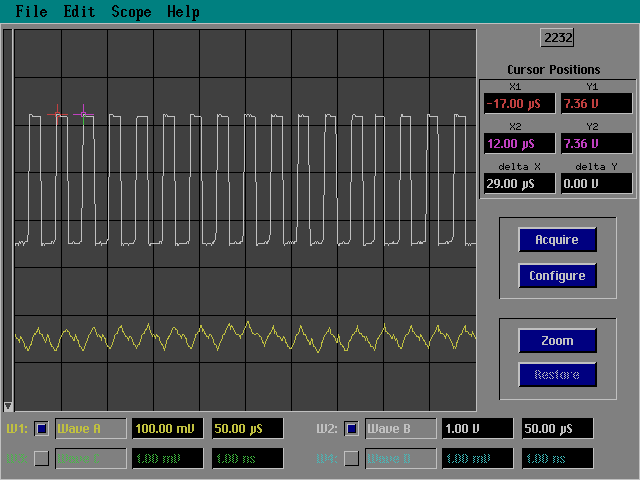
Vpp = 25 volt out, also valid for all other EW904B - TL497 related curves.
Original start situation, circuit is in error. Timing wrong mainly due to parasitic feedback.
TIP31C becomes hot.
Yellow is current info
EW904B - TL497
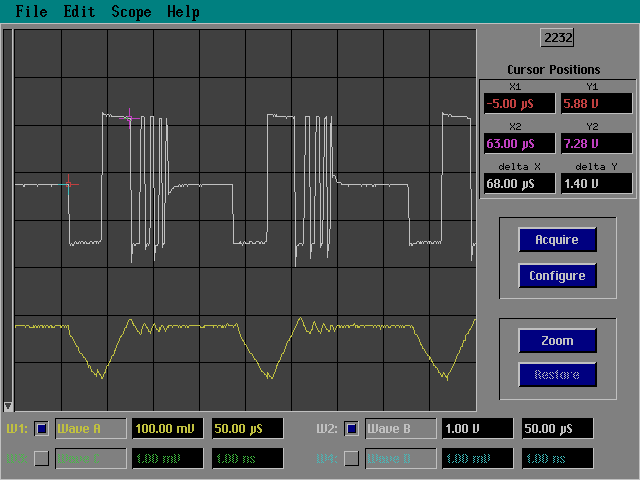
Parasitic feedback problems solved. Only ONE ground wire added from TIP31C emitter to buffer Cap. And an extra larger buffer electrolyte.
No RC or by-pass D yet added, no D's changed. Lots of "bumping".
If the bump hits zero, current becomes negative.
See positive dips in current curve.
EW904B - TL497

Almost finished. RC damping added and a by-pass switch diode over the TIP31C.
Normal slow 1N4002 rectifier still in place.
EW904B - TL497
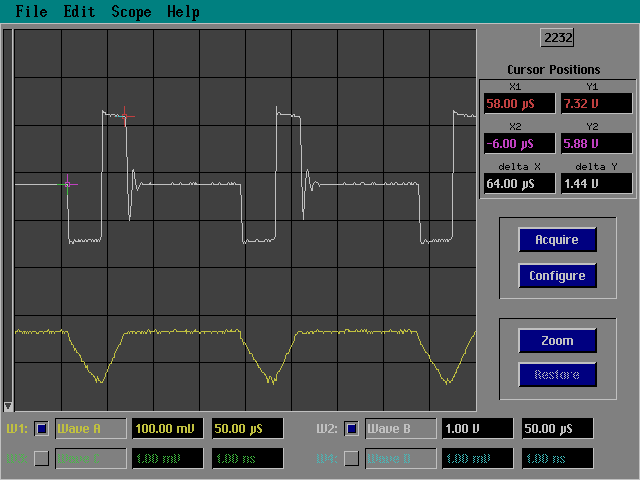
Difference with previous is switch rectifier RGP10M in place of 1N4002.
See the difference in switch off ringing.
Doesn't it look nice now?? Like in datasheet books?
Current is swinging nice in and out...
Yellow curve
And the TIP31C doesn't become (too) hot anymore.
EW904BN - TL497
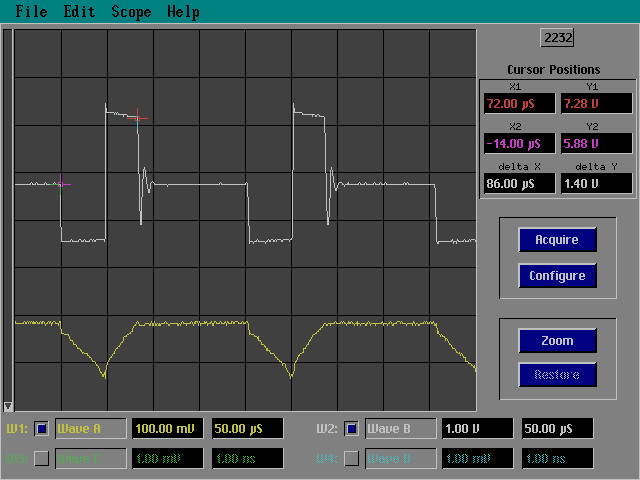
The circuit itself is unchanged, it is OK. Here the diodes are both changed by switch versions, and a damping network was added over the L's.
EW904B - A13-OFF
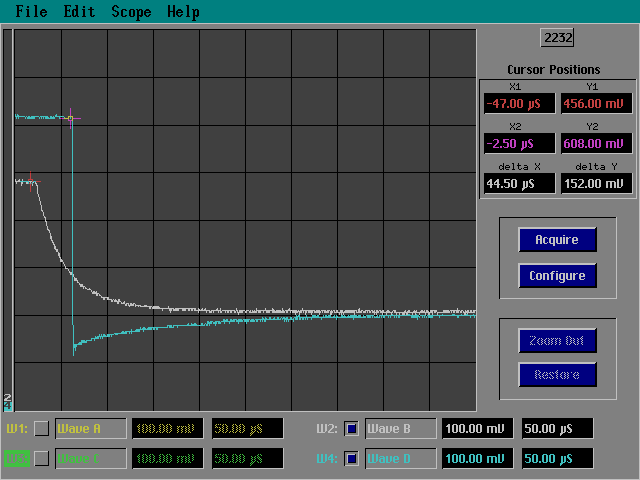
A13 OFF (and ON next image) with the former 1 uF speedup-C.
A small dip under and overshoot.
Works great but the looks are not neat.
Cap. replaced by 180nF
EW904B - A13-ON
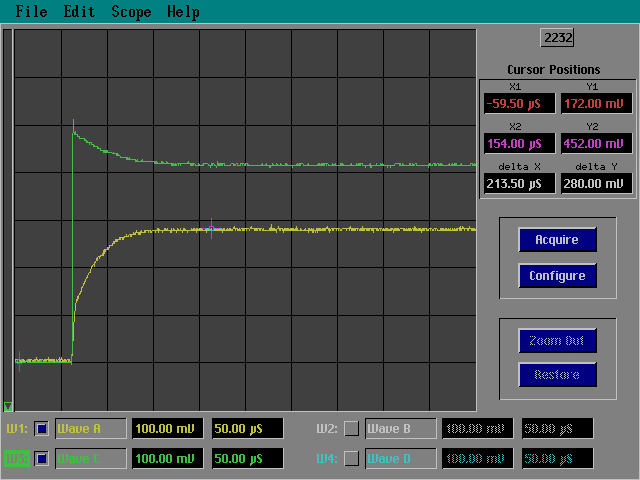
A small dip under and overshoot. Watch timing scale: 50usec/div. 5usec/div would have been more appropriate.
I didn't realised then it was that worse!
EW904BN - A13-BN
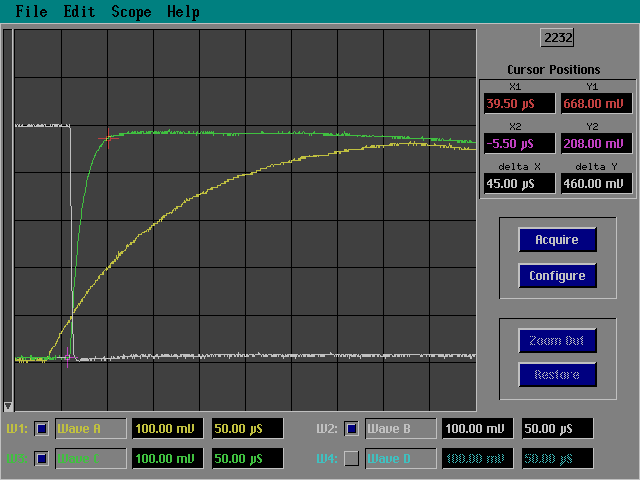
Original EW904BN A13 rise time is
the slowest one, 300 usec from zero to one!!!
And < 25 usec with an extra very low pull-up resistor (470 to 220 Ohm)
EW904BN - A13
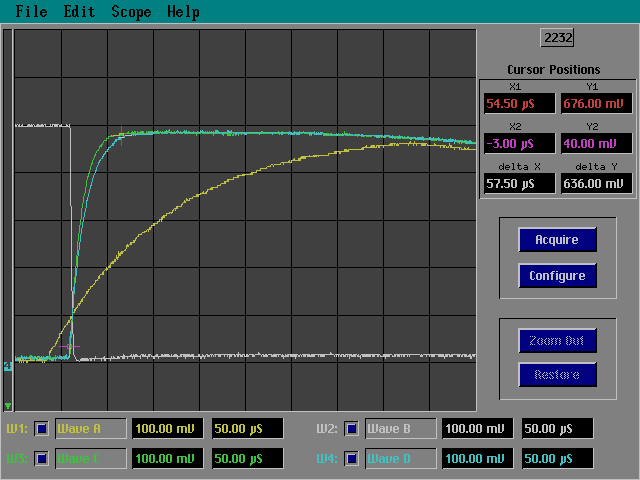
Fall time is reasonable (could be better). The faster rise time is with 470 Ohm pull-up. The fastest is with 330 Ohm, still not fast enough. 220 Ohm is used now (see picture page), that's the allowable safe min. R. The circuit is still begging for more speed.......
EW904B - A13
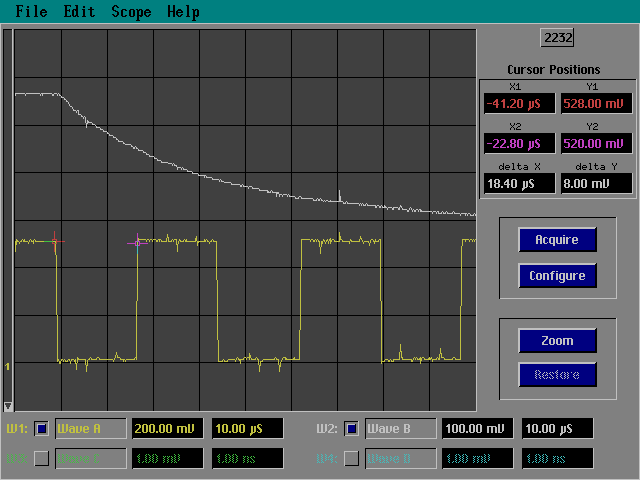
A more appropriate comparison:
A13 falltime compared with the A0 cycle time on a 386SX-33 (= 18 usec). And now at 10usec/div.
EW904B - A13
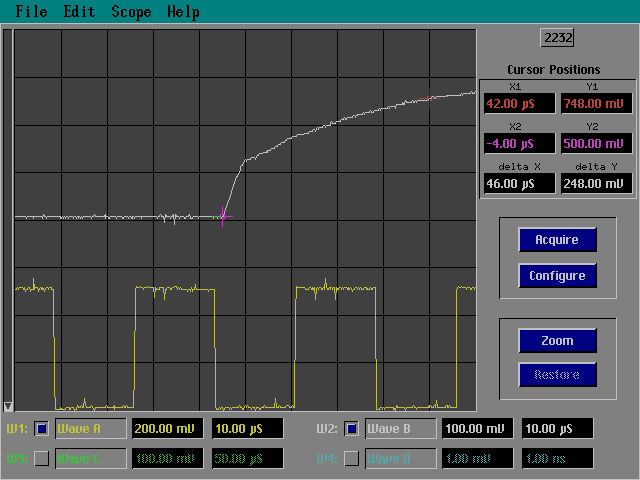
And this is the original A13 rise time compared with 18usec A0 cycle.
EW904B - A13

This is the improved A13 circuit falltime with A0 cycle and original circuit timings combined. There is one thing changed now: the speedup-C = 150 nF, we are reaching zero very neat, but is slowly creeping to exactly zero.
A 0.2 Volt improvement is with a 180nF speedup-C inplace of the 150nF.
EW904B - A13
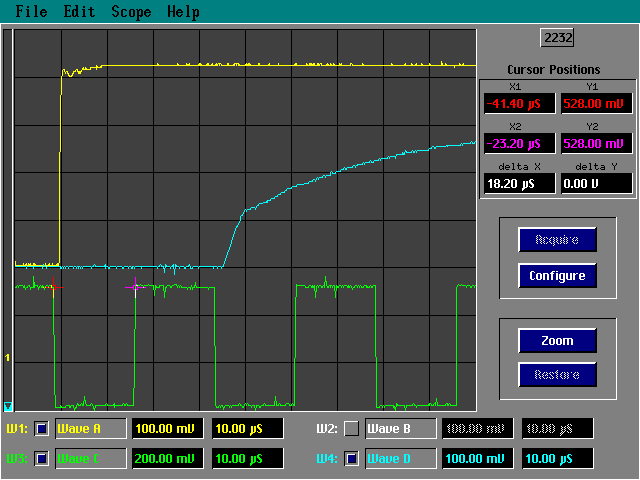
This is the risetime pulse, original and improved. The original slow rise has been shifted to the right. It starts original at the same point (centre-trigger was chosen).
904B-CE and 904B-CE2
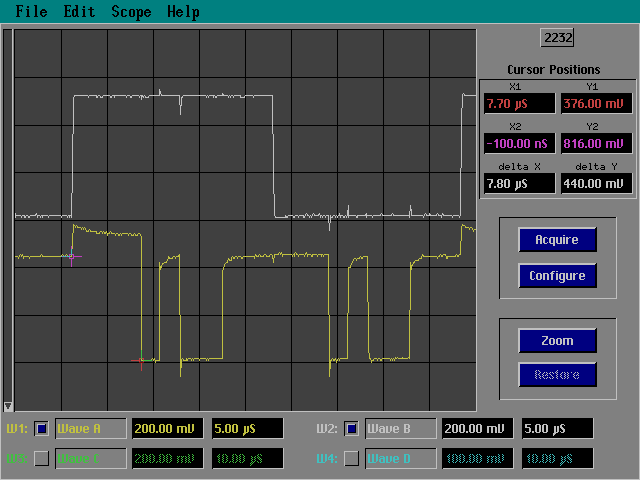
2nd version scope image
Both showing /CE pulses with 18 or 21 usec A0 timing
false /CE (?) pulse and real /CE pulse.
904BN-OE /OE

On the 904BN version the software is even running faster. Only 11 to 12 usec A0 timing (486DX2-66). And this file shows how tricky the timing is.
And the slow /OE rise
EW904B Vpp -> Vcc
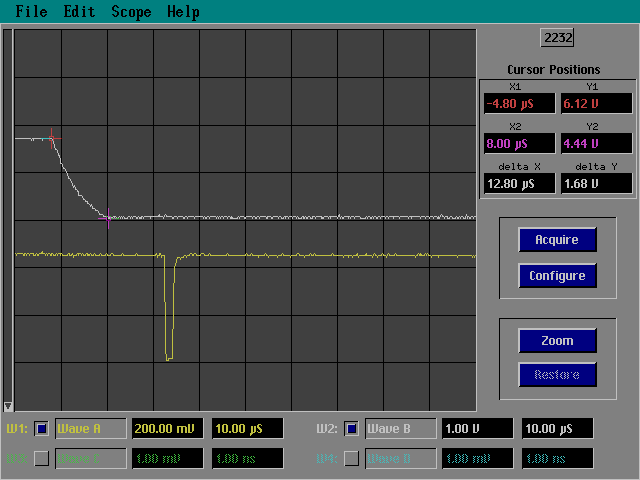
This is the timing for a jump from 21 to 5V Vpp during programming. Vpp delay is 12 usec. /CE is 12 usec further. That looks OK for the CPU speed of that moment.
(taken from a ??? machine)
